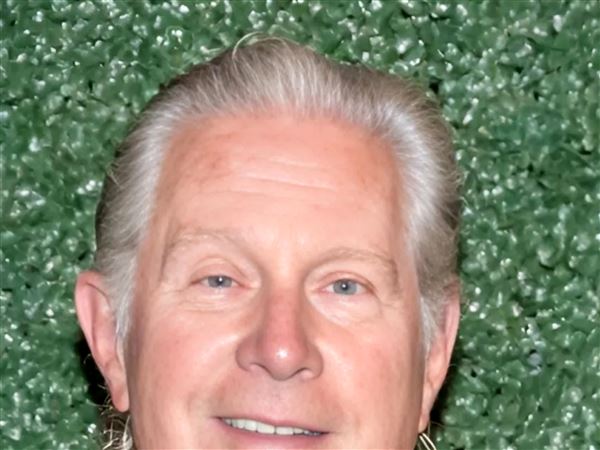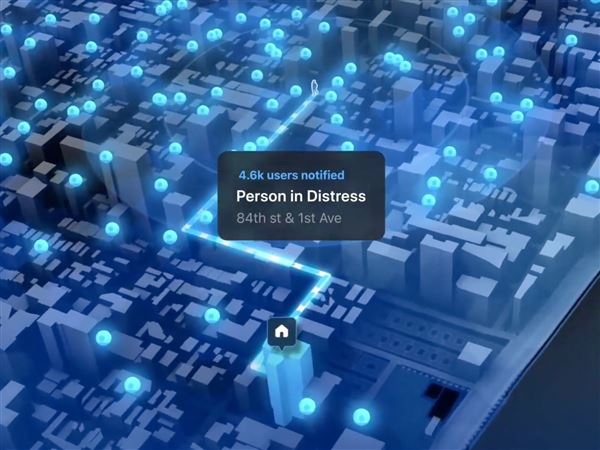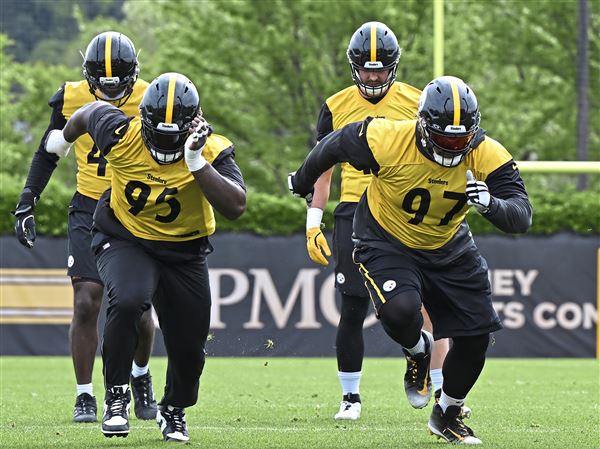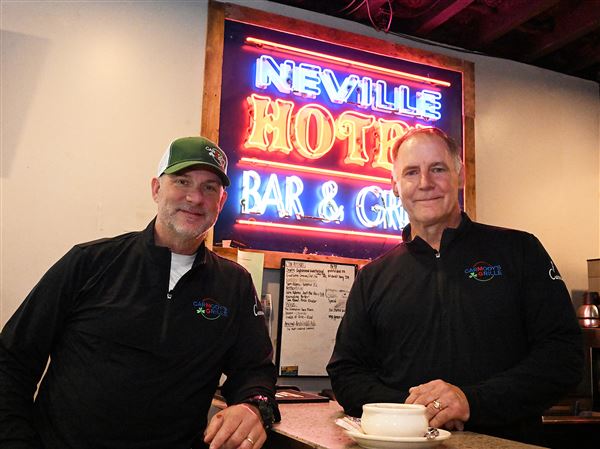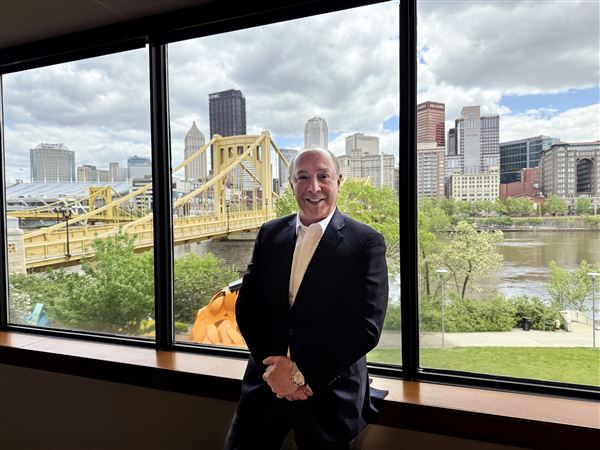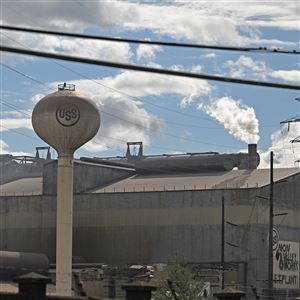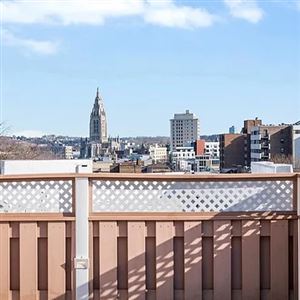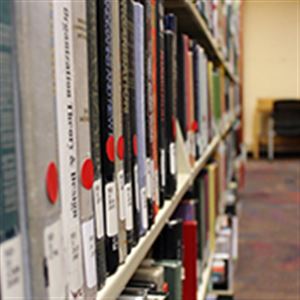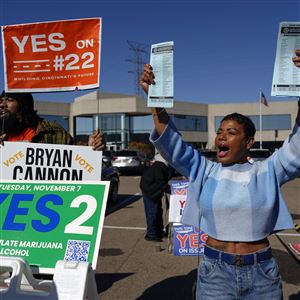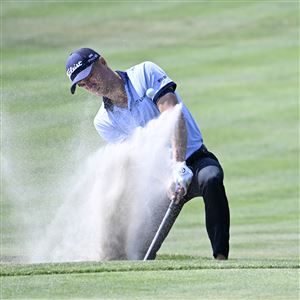Spencer Verrilla, 11, pushed his wheelchair as close as he could to a drinking fountain on the second floor of Mellon Middle School in Mt. Lebanon, but he could barely get his tongue to touch the arc of water that spurted out.

Krista Caldwell, 13, and Jordan Linkowski, 12, try to maneuver their wheelchairs down the halls of Mellon Middle School to get a drink of water. The pupils are part of Karen Peterson's seventh-grade science class who were experiencing what it is like to live with disabilities.
Click photo for larger image.
He first tried placing the wheelchair directly in front of the fountain and then angling it to the side and leaning over his shoulder to reach. By the time his attempt at getting a drink was over, the top of his shirt as well as his chin and cheeks were splattered with more water than went into his mouth.
"It was pretty hard," Spencer said of the exercise he participated in as part of the barrier awareness component of the seventh-grade science curriculum.
Spencer doesn't have a disability that requires the use of a wheelchair, but he and his classmates were asked to simulate situations in which they could experience disabilities in an effort to understand the barriers that disabled people face on a daily basis.
The program is taught through the genetics unit of science classes at both Mellon and Jefferson middle schools. It was instituted seven years ago as a way to make pupils more aware of and sensitive to disabilities, said Janet Niedzwicki, Mt. Lebanon School District inclusion specialist.
The goal of the program is to change pupils' attitudes about people with disabilities and to prompt them to think of ways to remove barriers.
In addition to using wheelchairs, pupils were blindfolded and asked to put on and button a dress shirt, to use sign language to communicate with each other and to write with the hand they don't normally use.
"I can't imagine not being able to see anything my whole life," said Rose Schrott, 11, after she completed the blindfold exercise. "That was just a few seconds and it makes me really grateful for what I have."
Lenny Lies, 12, said he thought he might be able to handle being blind, or having difficulty writing, "but not having the ability to speak would be really hard. It would be the worst."
As part of the disabilities simulation exercise, pupils were required to write down reflections on the experience and offer suggestions on ways to use technology and tools to help people with disabilities.
Karen Peterson, a science teacher at Mellon, said she made a point of discussing the exercise with pupils and pointing out that they are experiencing the disabilities for just a short period of time.
"They are not even going through a full day, let alone a lifetime, with these issues," she said.

Jordan Linkowski, 12, tries to button a shirt while wearing a blindfold. Behind him is Juliette Elbaum, 12, trying to do the same thing.
Click photo for larger image.
During the four-day unit, pupils study diseases and conditions that cause a variety of disabilities. Peterson said they also talked about how accidents can create disabilities in previously able-bodied people.
As part of the unit, the pupils heard from Brenda Dare, who was born with cerebral palsy, uses a wheelchair and does barrier awareness presentations on behalf of the Three Rivers Center for Independent Living. She encouraged the pupils to "see the world as a place that should include everyone."
She told pupils how, as a preschooler, she was sent to live in an institution because doctors told her parents they wouldn't be able to care for her. But she later returned home and even played goalie on a soccer team made up of disabled and able-bodied children.
The pupils identified a number of physical barriers to people with handicaps, things such as steps and narrow doorways and nonaccessible restrooms. But Dare told them the biggest barrier she had faced was the attitude of other people.
"There are people who think I can't do things because of my disability," Dare said.
She suggested that pupils think of people with physical and mental handicaps as "differently abled," not disabled, and she encouraged them to always offer help to a disabled person who may be having trouble with a task such as reaching a high shelf in a grocery store or opening a door.
Dare asked the pupils to think about their peers who have disabilities and why they might not get included in friendship circles and activities at school. Some pupils said they avoided reaching out to handicapped pupils out of fear and because of peer pressure to conform to their social groups, which don't often allow for differences.
During a similar session last year, Niedzwicki said a pupil with autism raised his hand and told the class that he felt left out every day at school. "I am left out of everything. No one asks me to eat lunch with them. I have no one to go to the movies with," Niedzwicki said of the boy's testimonial.
She said the boy's classmates told him they didn't realize he felt that way and then went out of their way to reach out to him. In the end, some pupils found they liked the boy, while others didn't and that's OK, Niedzwicki said.
"You don't have to be nice to someone because of their disabilities, but give them the same opportunity," Dare said.
Niedzwicki said each year she has several parents of disabled pupils who call her and thank her for the program.
Victoria Carrigan, a pediatric audiologist at Children's Hospital who works with hearing impaired children and who has children attending Mt. Lebanon schools, said she was impressed with the district's barrier awareness program.
"I think that bringing up the awareness level is critical to acceptance and it really helps [disabled children] to fit in," Carrigan said. It's particularly important to stress it in the middle school years, where differences are magnified by adolescents' desire to fit in.
"What I've seen is that children in their teens do not want to wear their hearing aids because they are not accepted at school," she said.
Though the barrier awareness program is part of the seventh-grade curriculum, Niedzwicki said inclusion practices were focused on in every grade. Each building has an inclusion team that meets three times a year to discuss ways to promote inclusion practices.
"What we live by in Mt. Lebanon," Niedzwicki said, "is that all kids belong."
First Published: December 29, 2004, 5:00 a.m.

